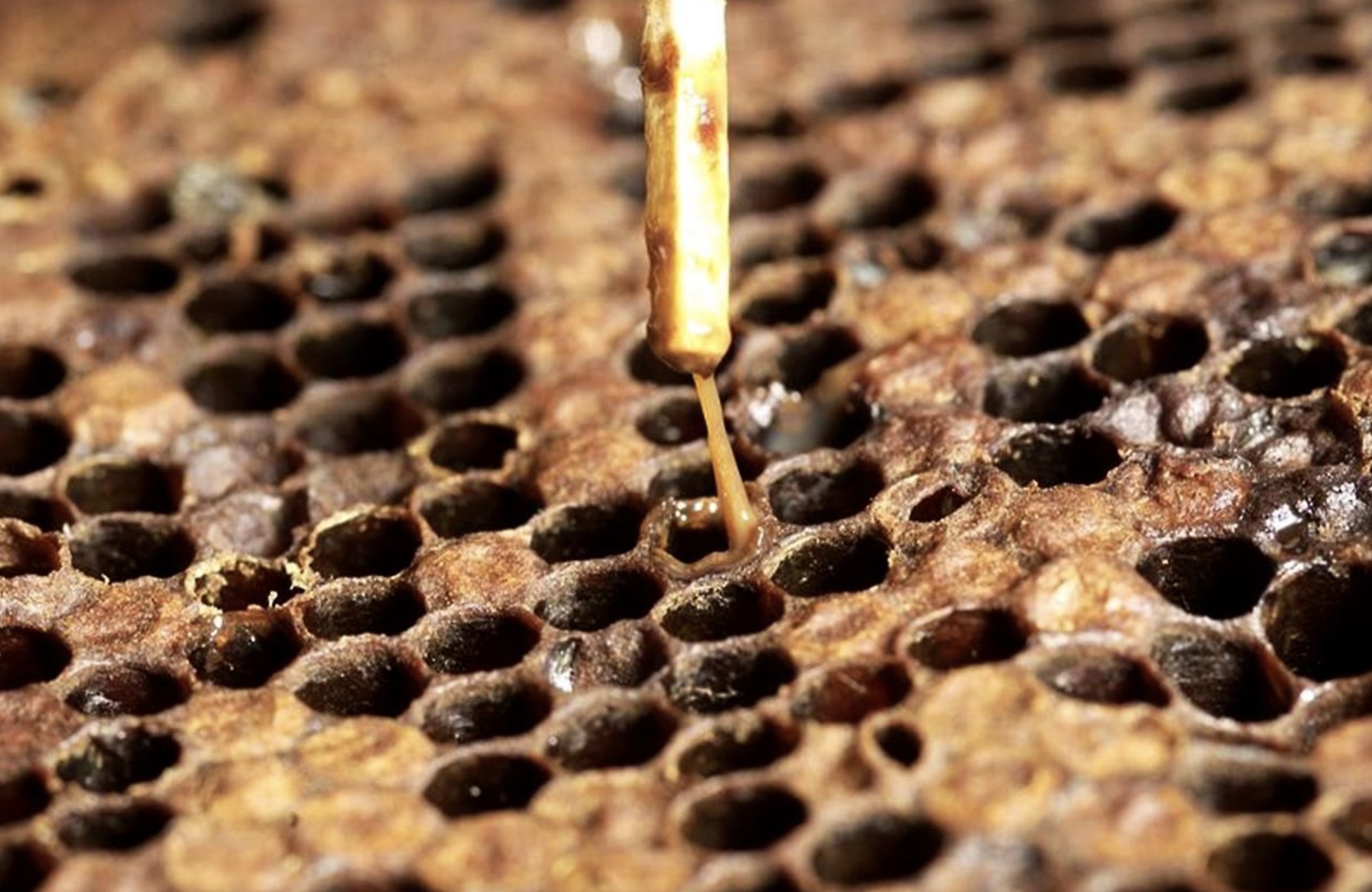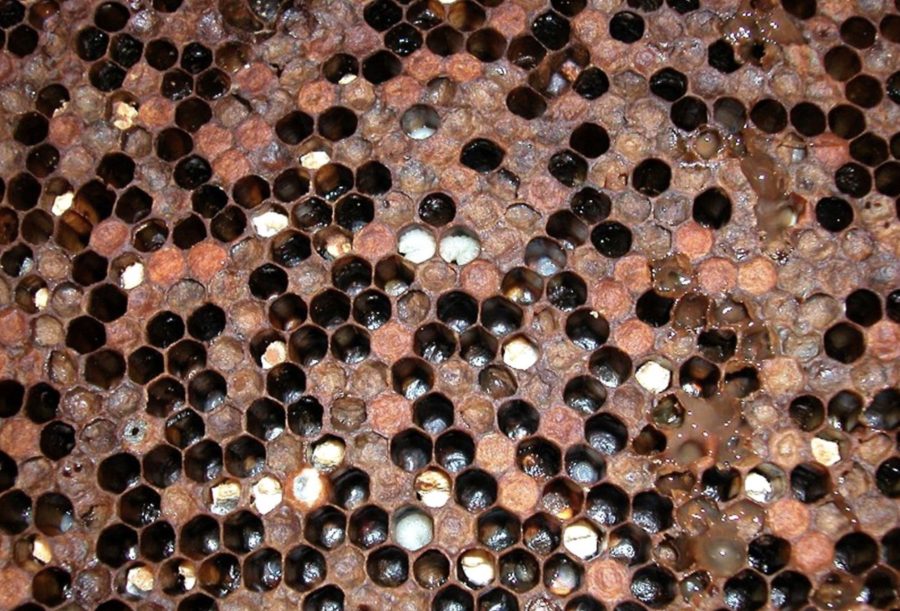Claire Waring looks at AFB; a fatal disease of the larvae of honeybees.
There have been press reports of a serious outbreak of American foulbrood (AFB) near Guisborough, Middlesborough, North Yorkshire.
With 32 confirmed infected colonies (at the time of writing), this is the biggest recorded outbreak since one in Norfolk in 2014.
WHAT IS AFB?
AFB is caused by a spore-forming bacterium, Paenibacillus larvae subsp. larvae. Larvae are infected when fed larval food contaminated with spores. The spores germinate in the larval gut and then move into the tissues where they multiply quickly. The infected larva dies, usually after the cell is sealed. It contains millions of spores which can lie dormant for many years and then germinate. The spores are also very resistant to high temperatures and many available disinfectants. They are thus extremely hard to eliminate. The infection will eventually kill the colony. Spores can be spread by beekeepers moving infected combs between colonies and by the bees themselves via robbing, swarming and drifting.
WHAT ARE THE SYMPTOMS?
How Can I Check?
You need to inspect the brood. First check the cappings and perform the ropiness test on any suspect cells. Then clear the comb of all the bees and hold it at approximately 45° to a light source (the sun or a torch). Look for AFB scales by scanning the bottom walls of any open brood cells. Ask your local bee inspector to come and have a look if you are not sure (www.nationalbeeunit.com/contact-us). A lateral flow device kit is available to test for AFB in the field (see References).

In the ‘ropiness test’ a mucous-like thread can be drawn out 10–30mm with a matchstick. (Courtesy The Animal and Plant Health Agency (APHA), Crown Copyright)
WHAT IS A NOTIFIABLE DISEASE?
AFB is a notifiable disease under the Bee Diseases and Pest Control (England) Order 2006. Similar orders are in effect in Wales, Scotland and Northern Ireland.This means you are LEGALLY OBLIGED to report your suspicions to the appropriate authorities.
- England and Wales: NationalBee Unit (nbu@apha.gov.uk)
- Scotland: Rural PaymentsServices (Bees_mailbox@gov.scot)
- Northern Ireland:Department of Agriculture,Environment and RuralAffairs (beehealth@daera-ni.gov.uk).
If AFB is confirmed, infected bees and combs will be burnt and buried under the supervision of a bee inspector. Wooden parts are scorched to a chocolate-brown colour with a gas burner. Other equipment is immersed for at least 30 minutes in a 0.5% solution of sodium hypochlorite. This is present in household bleach at a 3–5% concentration.The apiary will be put under a standstill notice and it is then illegal to remove bees or equipment until the order is lifted. It is also illegal for unauthorised persons to apply antibiotics to bee colonies.
CAN I CONTROL AFB?
- Quarantine any swarms you collect and check the brood regularly for signs of disease.
- Do not move a swarm to your regular apiary until the first brood cycle has been sealed so that you can check the brood and cappings.
- Hive swarms on foundation. Adult bees in the swarm will have full honey crops. They will use this honey to produce wax for comb-building which will reduce potential infection.
- Never buy or use old or second-hand comb which could be harbouring spores.
- Sterilise any second-hand equipment, as described above.
- In the apiary position hives to minimise drifting.
- Reduce entrances to prevent robbing.
CAN I INSURE?
You can insure your colonies against destruction resulting from an AFB or European foulbrood infection. You should be able to do this through your local beekeeping association. For details of Bee Diseases Insurance, see www.beediseasesinsurance.co.uk
REFERENCES
National Bee Unit: FoulbroodDisease of Honey Bees and other common brood diseases (tinyurl.com/NBU-AFB-leaflet).
National Bee Unit: Disinfecting a hive after disease (tinyurl.com/NBU-hive-cleaning).
Bee Craft: Apiary Guide – Brood Disease (tinyurl.com/BC-apiary-guide-brood-disease).
Vita Bee Health: AFB diagnostic test kit (https://tinyurl.com/Vita-AFB-test-kit)
Main image caption: In a heavy infection, sealed brood has a ‘pepper-pot’ or spotty appearance. It can also smell bad. (Courtesy The Animal and Plant Health Agency(APHA), Crown Copyright).
To receive regular copies of The Country Smallholder magazine featuring more articles like this, subscribe here.
For FREE updates from the world of smallholding, sign up for The Country Smallholder newsletter here.








